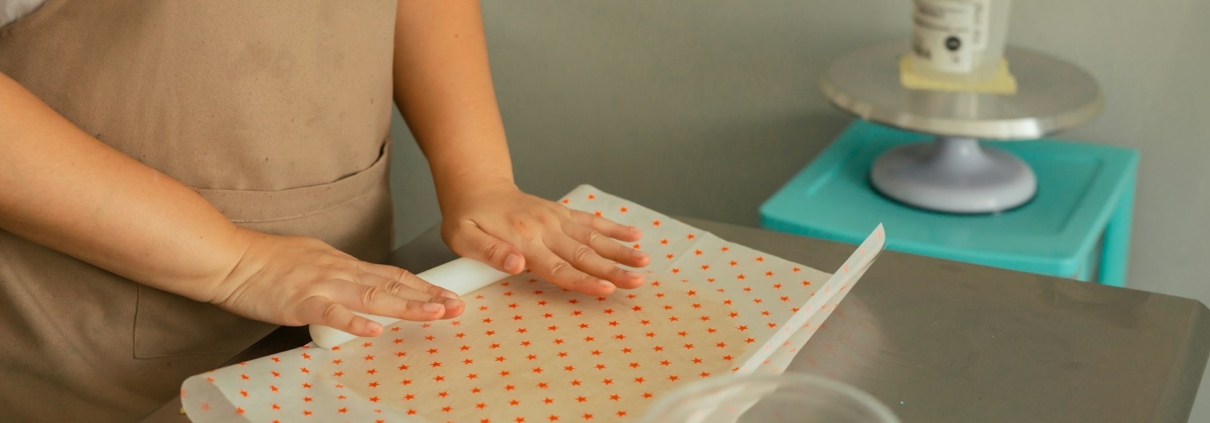Common Issues with Greaseproof Paper in Bakeries
Running a bakery means every detail plays a part in how your products are experienced and remembered. From the smell of fresh-baked pastries to the final touch on your packaging, the small things can leave a big impression. Greaseproof paper might not seem like a major player on the surface, but when it fails, you notice. Whether it is soggy bottoms or greasy smudges seeping through the wrapper, poor-quality paper can take the shine off your hard work before a customer even takes a bite.
Good greaseproof paper is not just about function. It protects and presents what you have made, keeping items tidy, fresh, and appealing. For cakes, cookies, or any baked treat, the right choice supports the product and your brand. But not all greaseproof paper performs the same way, and bakery owners often encounter issues that impact cost, time, and customer satisfaction. Here are some of the common ones to watch out for.
Greaseproof Paper Problems in Bakeries
If you have ever unwrapped a cake only to find half of it stuck to the paper, you already know the frustration. Many small and mid-sized bakeries produce high-quality goods, but packaging can let them down. The paper may appear fine at first, but add heat, moisture, or product weight, and problems arise.
Here are some common issues bakeries face when using low-grade or unsuitable greaseproof paper:
1. Tearing too easily
When the paper rips during folding, wrapping, or transport, it compromises both presentation and protection. Delicate baked goods like cream-filled pastries are especially vulnerable.
2. Poor grease resistance
Some paper that looks greaseproof does not effectively block oil. This can lead to greasy fingerprints and stained bags, diminishing that clean, professional appearance.
3. Low heat resistance
Sometimes, baked goods are wrapped while still warm. Paper that cannot handle heat may absorb steam and stick to the product.
4. Sticking to the product
Cookies and other dense or sticky items can adhere to the paper, especially after storage. This can lead to breakage and spoil the polished look customers expect.
5. Inconsistent sizing or thickness
Low-cost wholesale or imported rolls may show variations in thickness or cuts. These inconsistencies interrupt workflow and reduce packaging quality.
Most of these issues stem from using paper that is not made for bakery use. Baked items are not only oily or hot; they can be sticky, fragile, and hold moisture. Standard food paper doesn’t always do the job. That leads to damaged products or the need to re-wrap items quickly, wasting time and money.
Next, we will look at how these problems impact various baked goods. From cracked brownies to limp danishes, not every product fails in the same way when the paper falls short. Knowing how greaseproof paper interacts with your product range helps with better decisions around quality and cost control.
Impact on Pastries, Cookies, and Cakes
Picture a finely baked almond croissant, a batch of cookies, or a soft sponge cake made to perfection, only to be compromised by the wrong packaging. Greaseproof paper missteps can affect each item differently. Pastry layers may tear off, cookies might take on a oily surface, and cakes can lose their shape.
Here are some specific cases:
1. Croissants and pastries
When the paper lacks heat resistance, tearing becomes a real issue. A pastry that should be soft and flaky can be flattened and broken. Sticking is another problem, pulling apart layers and ruining presentation.
2. Cookies
Poor sealing allows cookies to go stale quicker, losing crunch and freshness. Grease seepage detracts from appearance, while flimsy paper can get smudged and wet, turning customers off.
3. Cakes
Warm cakes set into unsuitable greaseproof paper may end up stuck. When removed, the topping, fondant, or crumbs may come away with the paper. A cake meant for a celebration ends up looking messy and poorly handled.
Each category of baked goods brings its own packaging demands. Picking a one-size-fits-all greaseproof paper often leads to quality problems that hurt your bakery’s product integrity.
Solutions for Common Greaseproof Paper Issues
Resolving packaging issues starts by choosing quality. Identifying what makes greaseproof paper dependable goes a long way in stopping issues before they occur.
Here is what to look for in high-performance greaseproof paper:
1. Strong resistance to grease and heat
Choose paper that prevents oil spots and withstands the warmth of freshly baked goods. This keeps packaging clean and polished.
2. Precision cut sheets or rolls
Uniform sizing helps maintain packaging standards and speeds up wrapping time.
3. Micro-embossed finishes
This texture reduces sticking while letting products breathe to keep crusts and surfaces from getting soggy.
4. Trusted suppliers
Work with providers who focus on bakery-specific needs, offering paper suited for heat, moisture, and oil content, with consistent performance in daily use.
Upgrading these qualities helps maintain your product’s visuals and freshness, saving resources lost to repackaging or discarding damaged items.
Choosing the Right Custom Packaging
Once basic performance is addressed, custom packaging adds value not only to the product but to the customer’s full experience. Thoughtful packaging aligns with branding and lets your business stand out while keeping baked goods intact and fresh.
Consider these options:
1. Custom pouches or bags
Perfect for take-home cookies or pastries. Strong seal options preserve freshness and printed designs build brand familiarity.
2. Custom cylinders
Great for cakes or roll-style pastries. They offer shape security and can add a premium look with unique graphic designs.
3. Folding cartons and custom boxes
Ideal for larger orders or whole loaves where structural support is needed. Full branding across the packaging helps boost visual recall and social media sharing.
4. Printed film on rolls
Useful for individually wrapping items. It provides efficiency during packaging and clear brand visuals for display purposes.
Choosing packaging that fits both form and function helps baked items travel well, look better, and build a recognisable customer experience.
Elevate Your Bakery with Premium Packaging
The benefits of choosing high-quality greaseproof paper extend beyond function. When it strengthens how your product looks, stays fresh, and represents your brand, it adds credibility to your business. Common packaging failures cost time, money, and reputation, especially when your hard work is judged solely by how the final product appears.
Using custom solutions made for bakery needs means your packaging performs consistently and represents your quality. Whether in-store or on a customer’s table, your baked items deserve a package that reinforces the care that went into making them.
Working with trusted suppliers and choosing paper that meets the challenges of your menu items protects every detail of your product. In doing so, you’re investing in customer satisfaction and long-term loyalty, delivering baked goods with pride every time.
Ready to avoid smudged wraps and soggy bottoms? At Star Stuff Group, we offer personal support and premium branding solutions that keep your bakery goods looking just as fresh as they taste. Our greaseproof paper is made for bakeries that want to protect their products and impress customers at every step. Let’s create packaging that fits your food, your style, and your story, backed by local service from a family business that understands what growth really takes.



